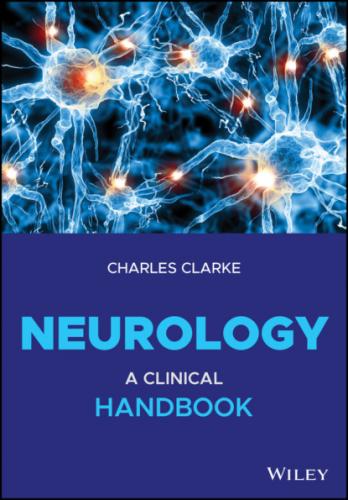Reticular Formation
The RF has no single overriding function – and no single condition becomes apparent when it is damaged. It is a control centre, a polysynaptic network within the thalamus, hypothalamus, brainstem and cord involved in:
Respiratory and cardiovascular control
Sleep, wakefulness, arousal and mood
Pattern generation – reflex activities, for example chewing, swallowing, conjugate gaze
Micturition, bowel and sexual function
Sensory modulation (see Gate control below, and Chapter 23)
Autonomic and reflex activity (Chapter 24).
Essential anatomy and neurotransmitters: Figure 2.11 The raphe nuclei (pronounced ‘raffay’ = a seam in Greek) are the major source of serotoninergic neurones in the neuraxis.
Gate Control: Sensory Modulation
Gating (also Chapter 23) means control of synaptic transmission between one set of neurones and the next. The RF has a role in gating sensory stimuli.
Tactile sensation is gated at the posterior column nuclei. Nociceptive transmission from the trunk and limbs is gated in the posterior grey horn of the cord, and from the head in the spinal V nucleus. One crucial cord structure is the substantia gelatinosa, rich in excitatory glutaminergic neurones and inhibitory GABAergic and enkephalinergic neurones.
Unmyelinated C fibres mediate dull, intense, prolonged, poorly localised pain. Short, sharp, well‐localized pain is mediated by finely myelinated Aδ fibres. These synapse directly on relay neurones of the lateral spinothalamic tract.
Large A (mechano‐receptor) afferents from hair follicles and skin synapse on anterior spinothalamic cells and send collaterals to inhibitory (GABAergic) gelatinosa cells. These then synapse on lateral spinothalamic tract relay cells.
Enhancement of RF inhibition from the magnus raphe nucleus, by rubbing, TENS, implanted stimulators, sleep and pain‐modulating drugs reduces – that is, gates – C fibre activity.
Figure 2.11 Reticular formation: (a) Nuclei (b) Principal neurotransmitter cell groups.
Source: Fitzgerald (2010).
Limbic System and Hippocampus
The limbic system includes:
Hippocampi, mamillary bodies and septal area
Insulae, cingulate and parahippocampal gyri
Amygdala – subcortical nuclear masses adjacent to each temporal pole.
Other regions nearby are the nucleus accumbens, medial dorsal nucleus of the thalamus, hypothalamus and part of the RF. Orbital cortex, temporal pole, corpus callosum, choroid plexus and lateral ventricle are also nearby (Figure 2.12).
This region is involved in memory, arousal and mood – and in epilepsy (see hippocampal sclerosis, Chapter 7).
Insula and Cingulate Cortex
The insula is involved in pain, and in language:
Anterior: a cortical centre for pain perception
Posterior: pain – emotional responses to/memories of
Central: language – emotional responses.
The cingulate cortex has six zones:
Executive: connected to dorso‐lateral prefrontal cortex and SMA
Nociceptive: afferents from thalamus (medial dorsal nucleus)Figure 2.12 Limbic system: brain midline sagittal section.Source: Champney 2016.
Emotional: happy thoughts light this area on fMRI
Micturition: activity seen on bladder filling
Vocalisation: active during decisions about construction of a sentence ‐ changes in activation and reduced blood flow can occur in stammering
Autonomic: respiratory and cardiac – responses to emotion, sweating and blushing.
Amygdala and Kindling
Fear and anxiety are mediated via the amygdala, and there are widespread autonomic connections that provide potential explanations for everyday experiences, such as freezing with fear, hypertension with severe pain, and feeling nauseated, hypotensive and sweaty at the sight of blood. Kindling is a term used, often conjecturally for seizure activity developing in an area of brain contralateral to or distant from an epileptic focus. This phenomenon is as far as is known confined to the amygdala and hippocampus.
Nucleus Accumbens, Septal Region and Basal Forebrain
Stimulation of areas of the ventral striatum (nucleus accumbens, ventral olfactory tubercle, ventral caudate and putamen) can lead to a sense of well‐being akin to a shot of heroin, attributed to excessive dopamine release.
Stimulation of the septal region in man produces pleasurable sexual sensations and/or orgasm. In animals, destructive lesions cause extreme anger – known as septal rage.
The basal forebrain lies between the olfactory tracts and the amygdala. The magnocellular basal nucleus of Meynert and its cholinergic neurones extend throughout the cortex. These magnocellular basal nuclei, septal nuclei and neurones, and an area known as the diagonal band of Broca are also called basal forebrain nuclei. These nuclei exert tonic cholinergic activity within the cortex, and thus maintain wakefulness.
Thalamus
The paired conjoined halves of each thalamus are large nuclear masses. Divisions and connections are shown in Figure 2.13.
Figure 2.13 Thalamus (from above): (a) nuclei (b) connections of relay nuclei.
Source: Fitzgerald (2010).
Note the large ‘Y’ of thalamic white matter – the internal medullary lamina – that divides the nuclei into three cell groups:
Anterior (within the ‘Y’)
Medial dorsal
Lateral nuclei.
Lateral
